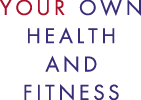Several news reports last week pointed to a curious trend: the collapse of medical care. It’s not as ominous as it sounds. “Collapse” might be too strong. Perhaps “slowly vibrating apart” would be more accurate. But “collapse” is so much more dramatic. Five items caught my eye.
First, a study in the journal Health Affairs debunked a lot of myths about who uses emergency rooms. But something else struck me: between 1993 and 2003, ER traffic increased 25%. Why are we having more medical emergencies? Has the world become more dangerous?
Second, a study by the Institute of Medicine documented the frightening amount of preventable suffering, injury, and death due to drug mistakes. The conservative estimate was 400,000 so-called adverse drug events with the possibility that there were as many as 1½ million. And this is only in hospitals and nursing homes.
Third, an article in JAMA reported that researchers who publish in medical journals continue to lie about their ties to industry. So what? Those research results are what physicians use to guide treatments and what institutions like the NIH use to set treatment standards. Cholesterol standards for treatment of cardiovascular disease were lowered dramatically by a panel of nine experts, eight of which had extensive ties to cholesterol drug manufacturers.
Fourth, a survey released by the Union of Concerned Scientists reported that FDA scientists believe that their agency is negligent regarding product safety. The lead agency responsible for protecting us isn’t. When it comes to drug safety, we’re on our own—which might not be such a bad thing.
And finally, there’s an opinion piece in the current issue of the New Scientist titled “Time to resist the illness industry.” The article is about an issue we’ve often discussed on this show: how current medical science and practice, under the banner of disease prevention, has turned healthy people into patients. “The intrusion of medicine into new areas is not only due to market forces. It is also happening because the art of healing has not led to any real breakthroughs for decades.”
The author is speaking of the institutionally sanctioned art of healing as stagnant. In fact what all of these reports point to is stagnation and worse in the institutions that deliver medical care.
“The Health Care Crisis” is characterized as vast numbers of people denied access to the current medical care system. These five reports make me wonder why anyone would want in. What they suggest to me is that there are two other health care crises.
One crisis is the dysfunction of medical and health care institutions on a rather grand scale because there’s a difference between medical care and health care. Medical care is about the art of healing. Health care is about protection from harm and support for the body’s capacity to protect itself and heal. Health not medicine is about prevention. Yet health has been institutionally colonized by medicine. It isn’t working. It’s slowly vibrating apart because the current institutions are asking the wrong questions in the wrong way. We need an anti-colonial health insurgency.
Which brings me to the second health care crisis. An anti-colonial health insurgency begins with your own health education. Who are the real healers? How do you support your body’s specific capacity to protect itself and heal? How do you prevent exposure to substances and environments that compromise your health?
Layna’s not kidding when she says that staying informed not only protects your health, it protects your freedom.
The issues in this article are developed (with references) in issue #4 of the Progressive Health Observer in a review article titled “Health Care Bankruptcy” and in a review article titled “Fit to Print? A review of The Truth About the Drug Companies and Critical Condition“.
Related resources are available on the Health Politics page.

